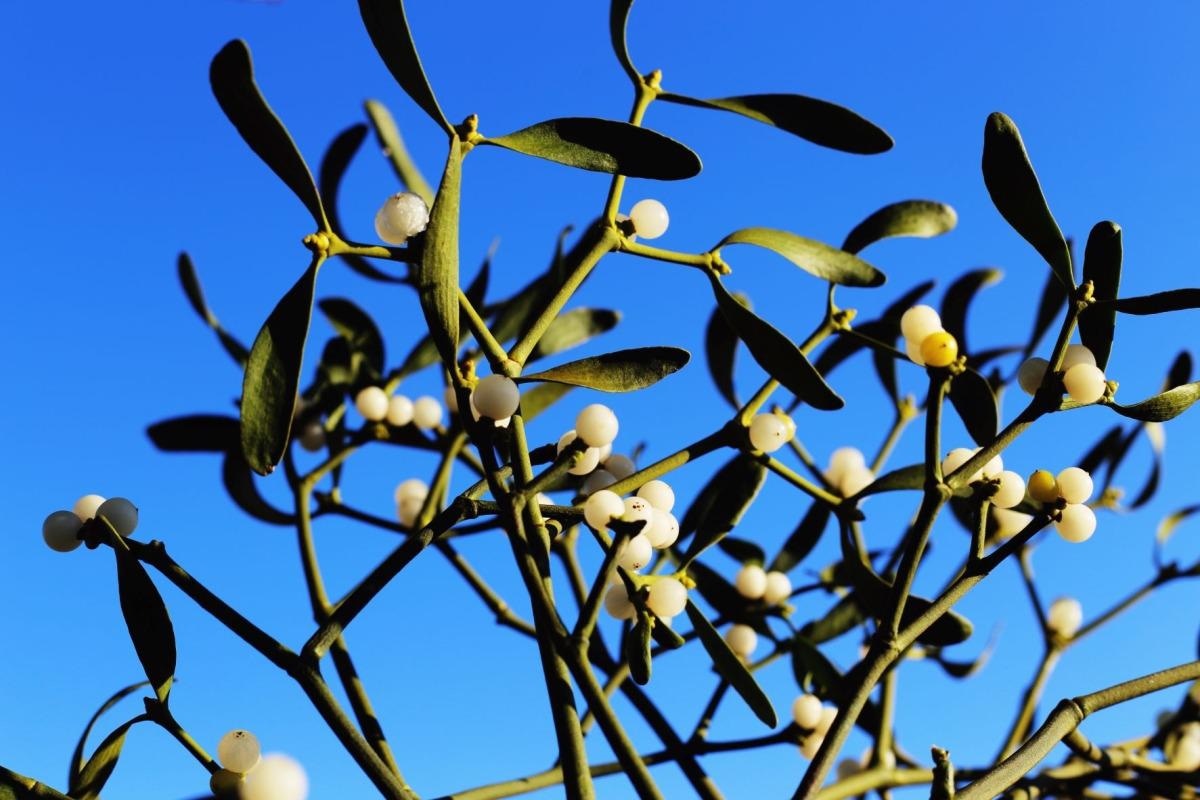Each mistletoe berry can yield up to 2 m of viscin, a sticky thread. It enables the parasitic plant’s seeds to adhere to and infect host plants. Mistletoe berries have been used to cure anything from infertility to epilepsy to cancer since ancient times. However, no one has adequately studied the glue’s possible medicinal or technical applications until now.

Image Credit: McGill University
According to a recent paper published in the journal PNAS Nexus by McGill University and the Max Planck Institute of Colloids and Interfaces, viscin’s ultra-stiff flexible fibers, which adhere to both skin and cartilage as well as various synthetic materials, could have a variety of biomedical and non-biomedical applications with simple processing.
It is a revelation that happened practically by accident, thanks to the acts of a small girl.
I had never seen mistletoe before living in Germany. So, when my daughter was playing with a berry from a mistletoe we bought from a local Christmas market, and it started sticking to everything, I was intrigued.
Matthew Harrington, Study Senior Author and Associate Professor, Department of Chemistry, McGill University
Harrington’s research focuses on studying natural materials and adhesives and adopting the fundamental concepts to produce improved bio-inspired materials.
A Plant with Very Unusual Qualities
The researchers discovered that viscin fibers, which cling to themselves as well as other materials, could be extended into thin films or constructed into 3D structures using simple wet processing.
They believe that viscin might be employed as a wound sealer or skin covering in the future. The capacity of flexible viscin fibers to attach to things is totally reversible under humid circumstances, which makes them an intriguing material.
I wore a thin film of viscin on my skin for three days to observe its adhesive qualities and was able to remove it from my fingers afterwards by simply rubbing them together. But there still remain many questions about this very unusual material.
Nils Horbelt, Study First Author and PhD Student, Max Planck Institute
Horbelt, according to Harrington, brought to the research the ingenuity and perseverance of a carpenter, which is his previous profession.
The next step for the researchers is to learn more about the chemistry behind this swellable, very sticky substance so that they can reproduce the procedure.
Harrington added, “The fact that viscin can adhere to both wood and skin or feathers, may be relevant evolutionarily speaking. But it is harder to explain adherence to various synthetic surfaces, such as plastics, glass, and metal alloys, from an adaptive point of view.”
“So viscin may simply represent a highly versatile adhesion chemistry, which is what makes it so interesting to explore what is going on chemically,” stated Harrington.
These findings imply that mistletoe plants could supply more than just holiday adornment in the future, given the great qualities of mistletoe viscin and the fact that mistletoe plants are numerous, biodegradable, and bio-renewable.
Journal Reference:
Horbelt. N., et al. (2022) Mistletoe viscin: a hygro- and mechano-responsive cellulose-based adhesive for diverse material applications. PNAS Nexus. doi:10.1093/pnasnexus/pgac026.